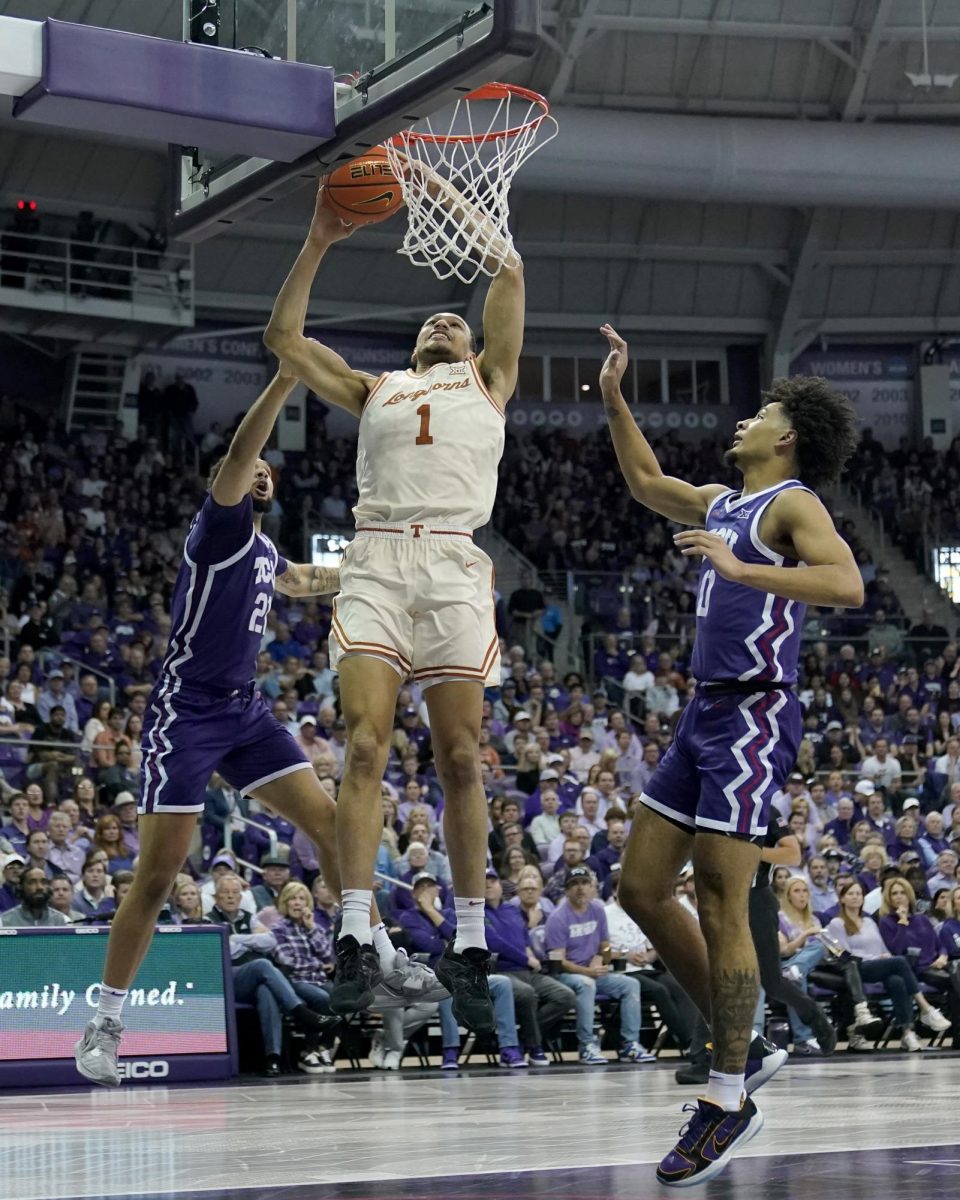Sophomores Karviar Shepherd and Chris Washburn understand the importance of shot blocking.
In basketball, shot blocking is a team’s last line of defense. When a player beats his defender on a drive to the basket, it’s the post defender’s (typically the center or the power forward) job to rotate over and block the opponent’s shot.
“It gives us energy as a team,” Washburn said. “Good defense leads to easy offense and helps build confidence for the next defensive possession.”
“[It] gives teammates a security factor,” Shepherd said. “Helps them trust they have help if they get beat.”
Shot blocking proved to be a big part of the Horned Frogs’ success on defense this season. In their 70-55 upset of No. 21 Oklahoma State, they blocked a total of eight shots, two of those coming from Shepherd.
During their 13-0 nonconference run, the Frogs gave up only 53.2 points per game while blocking an average of 6.5 shots per game. The stretch included TCU’s season-high 12-block performance against Mississippi Valley State.
The Frogs also blocked 11 shots in their 68-50 victory over McNeese State.
“It was a lot better from the last game on the defensive standpoint,” head coach Trent Johnson said after the win. “We had a good two days of practice.”
The Frogs blocked an average of 5.3 shots per game this season, second-best in the Big 12 and 14th-best in the nation. They ranked third in the Big 12 and 65th in the nation in scoring defense at 62.4 points per game.
There are many mechanical aspects that go into blocking an opponent’s shot. The most important, Shepherd and Washburn said, is timing and staying vertical to avoid having a foul called.
Shepherd said the player should use the same hand the shooter shoots with in order to avoid a foul, not the leave the ground on pump fakes and to jump vertical.
“Don’t commit to block a shot until you are 100 percent they are shooting,” Washburn wrote. “Timing is everything.”
In addition to verticality and timing, body positioning is also a critical aspect of shot blocking. Some aspects of body positioning include proper footwork, full arm extension and boxing out, using the body to move an opposing player out of the way to clear room to block the shot.
“I try to time my steps and footwork with the offensive player,” Washburn wrote. “I make sure I do not bite on pump fakes and I always try to be the second jumper. It is also important to not take yourself out of the play when trying to block a shot.”
“I try to time the ball and react to the offensive player’s movement as quick as possible,” Shepherd wrote. “After that I try to jump high and extend my arm as long as possible.”
When all these techniques are applied, an effective shot blocker is able to prevent an opponent from scoring while boosting the confidence of his teammates.
“It sparks the defense and allows the guards to play more aggressive,” Washburn wrote. “Just in case they get beat, they will have confidence that we will be there for the second line of defense.”
Moreover, rejecting an opponent’s shot gives the shot blocker’s team a large energy boost.
“It sparks team energy,” Shepherd wrote. “[The] bench goes crazy. Significant boost of energy for the team.”
Shot blocking is a concept valued not only by the Frogs, but by their conference opponents as well. Seven of the 10 schools in the Big 12 had at least one player in the conference’s top 15 in blocks per game. Texas’s Myles Turner lead the pack with an average of 2.6 blocks per game.
But Washburn and Shepherd aren’t deterred by the play of the conference’s other rim protectors. Rather, they push them to elevate their game.
“When you play with better players, it ultimately makes you play at a higher level,” Washburn said. “I am constantly trying to raise my game so I can be considered the next great big in the Big 12.”
“[It] constantly forces me to play my best every time I step on the court knowing they will bring their best,” Shepherd said.
The Frogs averaged 3.2 blocks per game during the 2013-14 season, seventh-best in the Big 12. That means the team’s block margin from last season to this season is 2.1, tied with the Longhorns for the largest improvement during that span.
As the team prepares for next season, Shepherd and Washburn gave their most important pieces of advice regarding shot blocking.
“Always jump straight up and be vertical,” Shepherd said.
“While shot blocking is important, getting a good fundamental defensive stop is what is most important,” Washburn said. “A blocked shot means nothing if we do not come up with the ball.”






